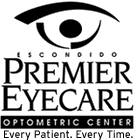 The complexity of the brain is truly fascinating; any slight change in its chemistry or structural integrity can result in a multitude of health problems, such as visual disturbances or permanent vision loss. This can affect everyday activities such as driving, walking, reading, using a computer, and staying focused. Below we’ll discuss what traumatic brain injury is and how to avoid one.
The complexity of the brain is truly fascinating; any slight change in its chemistry or structural integrity can result in a multitude of health problems, such as visual disturbances or permanent vision loss. This can affect everyday activities such as driving, walking, reading, using a computer, and staying focused. Below we’ll discuss what traumatic brain injury is and how to avoid one.
What Is a Traumatic Brain Injury?
A Traumatic Brain Injury, or TBI, is an injury to the brain caused by physical trauma, typically a sudden blow or bump to the head.
Concussions — a mild form of brain injury — are very common and makeup 75% of all TBI incidents. A concussion involves a short loss of normal brain function, as the hit can cause the brain to bounce around in rapid motion within the skull, occasionally causing chemical changes or damaging brain cells.
Moderate to severe TBIs cause the victim to lose consciousness from a few minutes to several hours. This can impact cognitive capacity along with other visual symptoms, such as:
- Difficulty reading and writing
- Partial or total loss of vision
- Light sensitivity
- Double vision
- Weakened eye muscles
There are numerous ways a TBI can occur, most of which are activities most of us do on a daily basis.
What Causes Traumatic Brain Injury?
Head injuries that cause TBI can happen during everyday activities such as running, hiking, swimming, or competitive sports.
The most common causes of TBIs are:
- Sports injuries
- Motor vehicle accidents
- Falls
- Being struck by an object
TBIs are more common than one would expect, affecting 10 million individuals around the globe annually. Below we’ll discuss what steps to take in order to prevent a TBI.
Tips for Avoiding Concussion and TBI
 One of the best ways to protect against a concussion or TBI is to avoid any risky behavior. While this isn’t always possible, there are some steps you can take to protect your brain and eyes from trauma and damage.
One of the best ways to protect against a concussion or TBI is to avoid any risky behavior. While this isn’t always possible, there are some steps you can take to protect your brain and eyes from trauma and damage.
Here are our top four tips:
1) Wear Protective Sports Gear
There are 3.8 million TBIs occurring each year in the US, and 20% are from sports. Wearing protective helmets and eyewear when playing basketball, baseball, or football can help prevent serious injuries, especially in children.
Speak with Dr. Karen Love about shatter-resistant polycarbonate or Trivex lenses, known for their impact-resistant materials.
2) Wear Sunglasses
Sun glare can cause momentary blindness. It’s that quick second of feeling blinded by the sun while you’re outside, driving in a car, or at the beach that can make you vulnerable to injury. An easy way to guard against this is by wearing sunglasses.
Sunglasses with polarized lenses prevent glare from entering your eyes by blocking strong light that reflects off surfaces such as glass, water, snow, sand, or pavement. Make sure that the sunglasses you choose contain 100% UV-blocking protection. Photochromic lenses are a smart option for those with prescription eyeglasses, as they darken when outside and revert back to clear lenses when indoors.
3) Pay Attention To Your Surroundings
As obvious as this may sound, people often forget to pay close attention to their surrounding environment. We all know that talking on the phone or texting while driving is dangerous, but being unaware of what’s happening around you can pose certain risks as well. Try to reduce your distractions when walking, driving, or performing any extraneous labor. When outdoors, be on the lookout for sharp objects or debris that can pose a risk.
4) Don't Forget to Wear Your Seatbelt
Parents and doctors have been drumming it into our heads for years, and for good reason! The #1 way to prevent or reduce car accident injuries is by wearing a seatbelt. According to The United States Centers for Disease Control and Prevention, 2.6 million American drivers and passengers were treated in hospital emergency rooms for car accident-related injuries in 2016. Transport Canada estimates that 25% of car accidents where victims were not wearing seat belts resulted in serious injuries, while 55% were fatal. In fact, car accidents are the number one cause of TBI-related deaths in America, especially among adults aged 20-24.
How a TBI Affects Vision
A TBI can negatively impact your vision, leading to sensitivity to light, blurry or double vision, or persistent eyestrain. In many cases, certain types of activities that were easier before the TBI suddenly become difficult. These include reading a book, driving a car, or watching TV.
Studies show that about 90% of TBI patients suffer from such visual dysfunctions, making it all the more critical to take precautionary measures in staying safe.
If you or a loved one displays any of these symptoms following a TBI, contact Escondido Premier Eyecare's Vision Therapy Center right away. Dr. Karen Love can offer a neuro-optometric rehabilitation program to help regain any visual skills that were lost. Feel free to call us with any questions you may have – we’re here for you.
REFERENCES
https://www.traumaticbraininjury.com/severe-tbi-symptoms/
https://www.allaboutvision.com/conditions/concussion-tbi.htm
https://noravisionrehab.org/patients-caregivers/facts-and-figures


*Closed daily for lunch between 1pm to 2pm